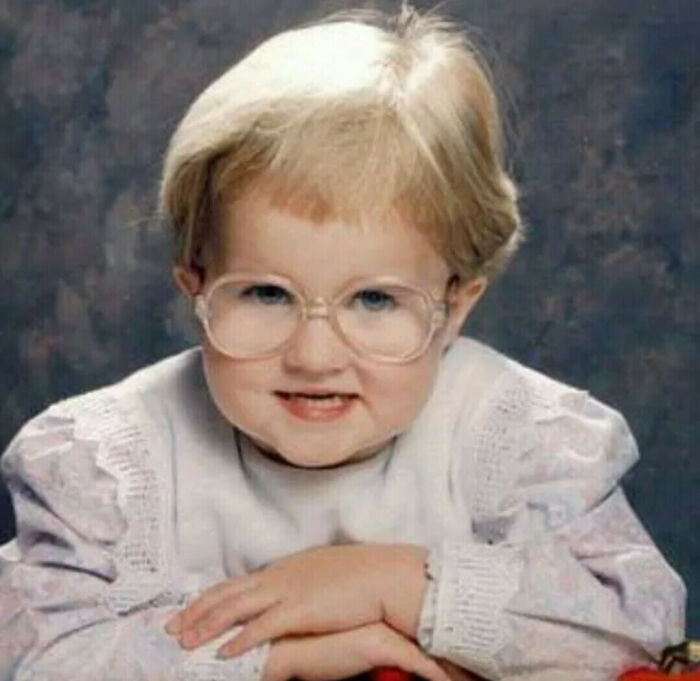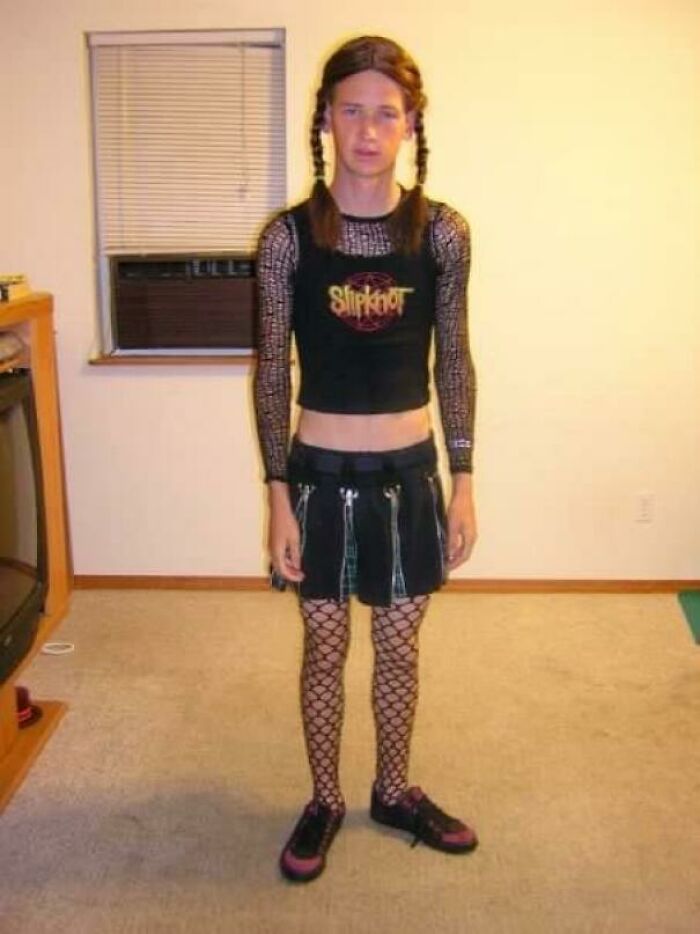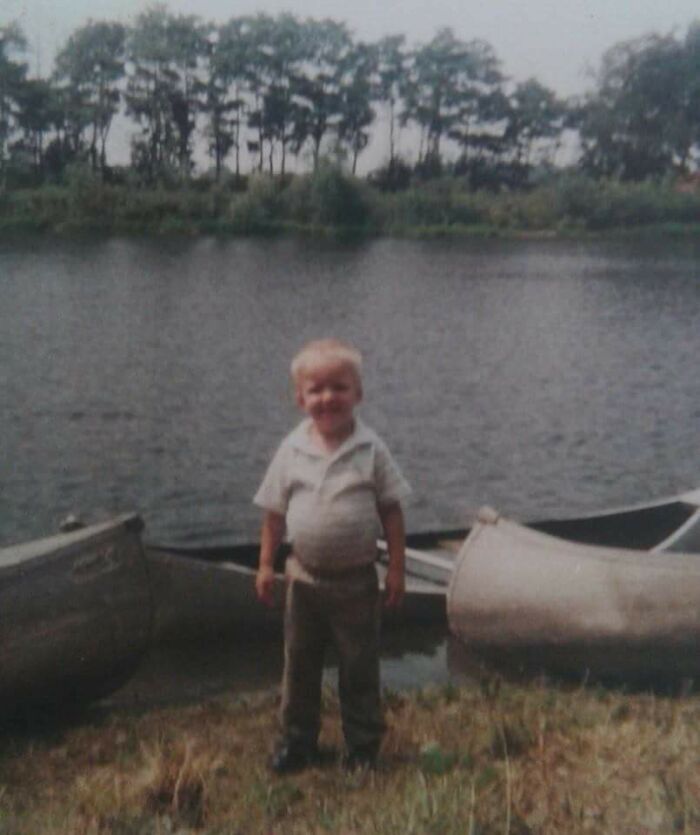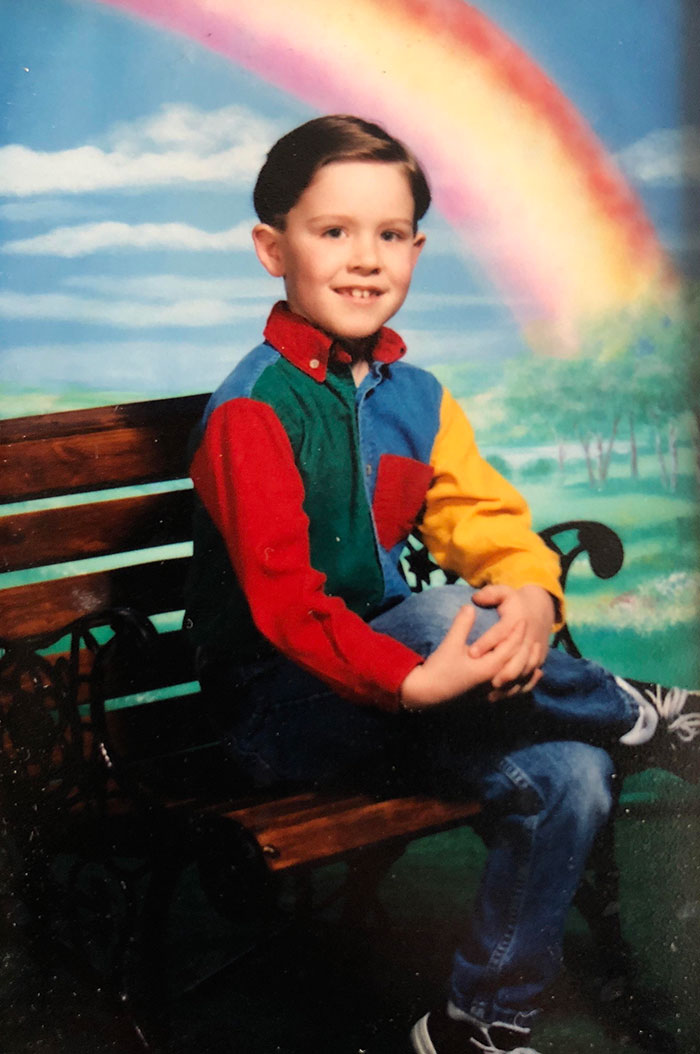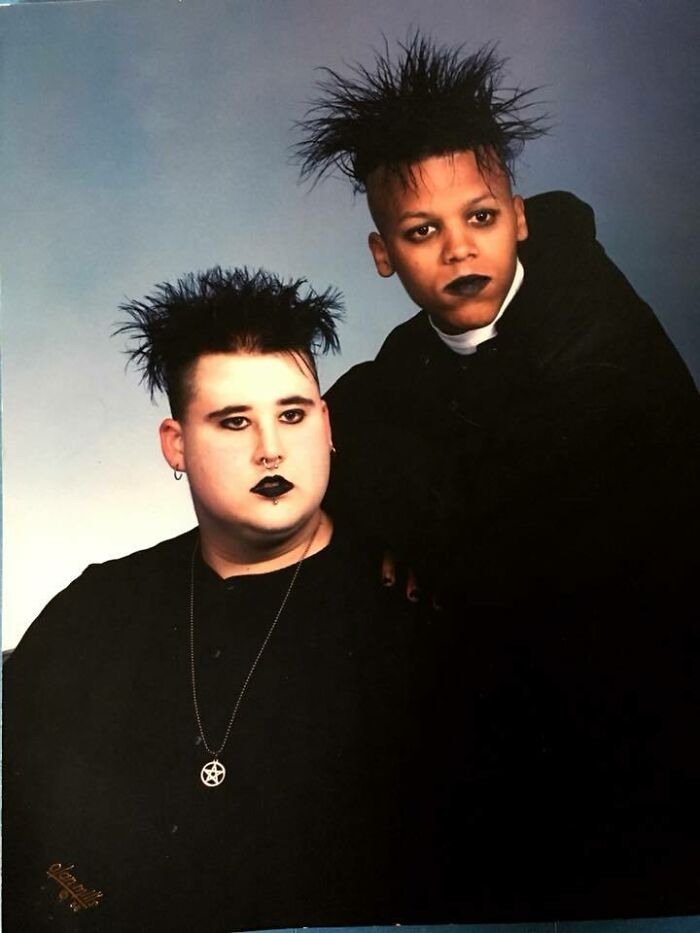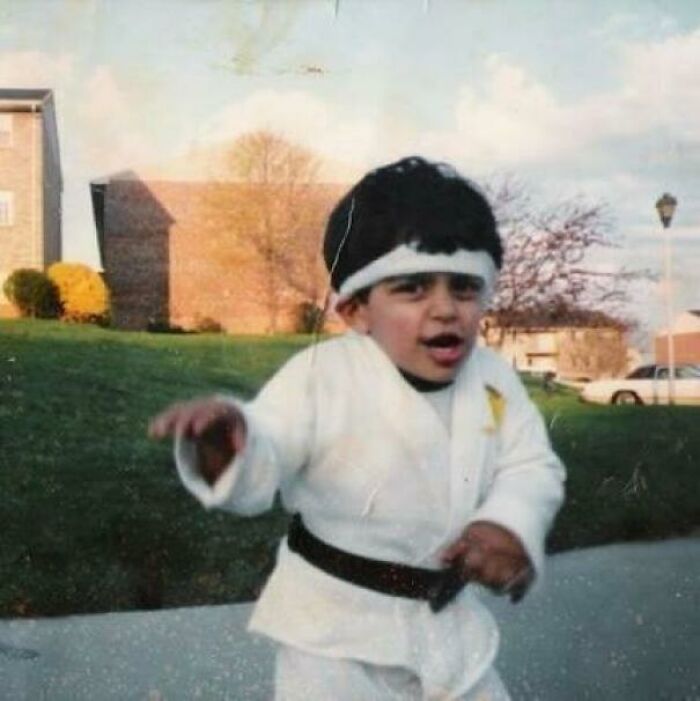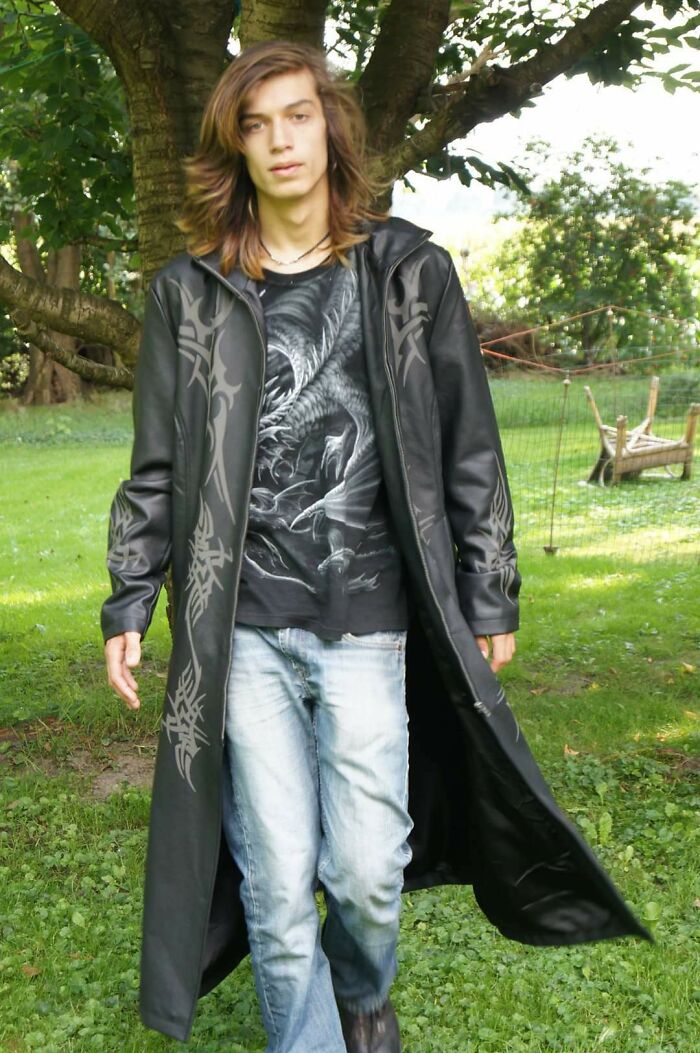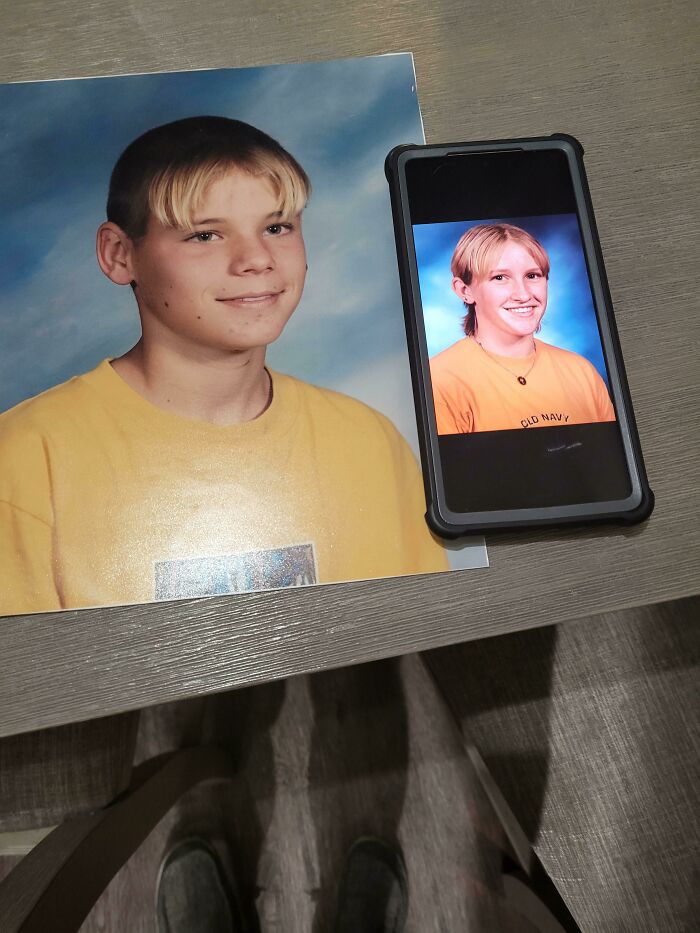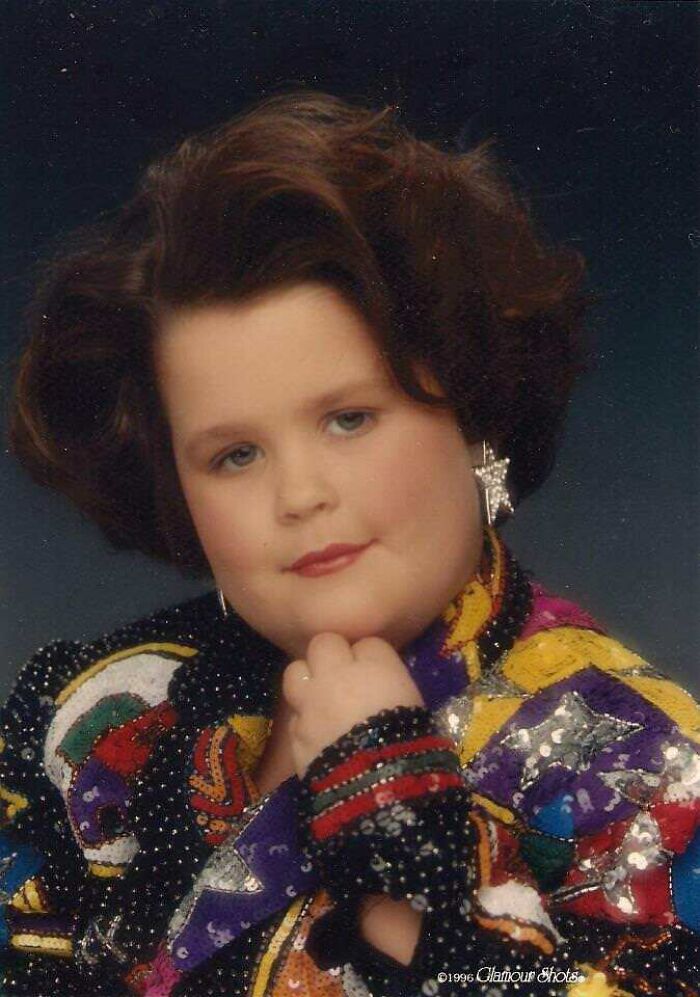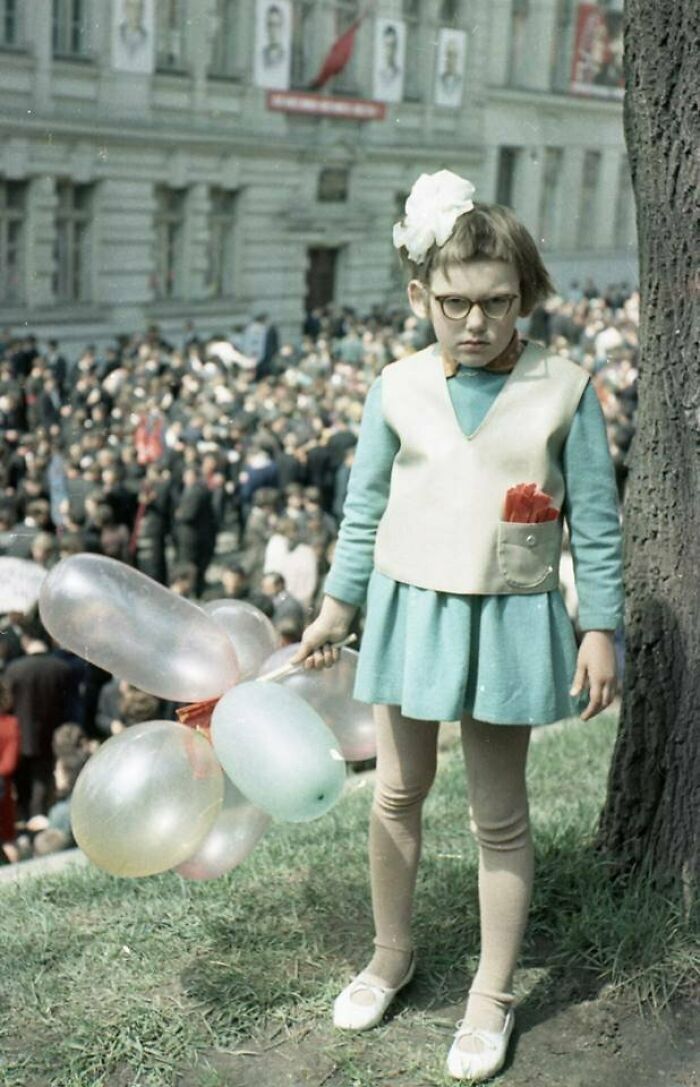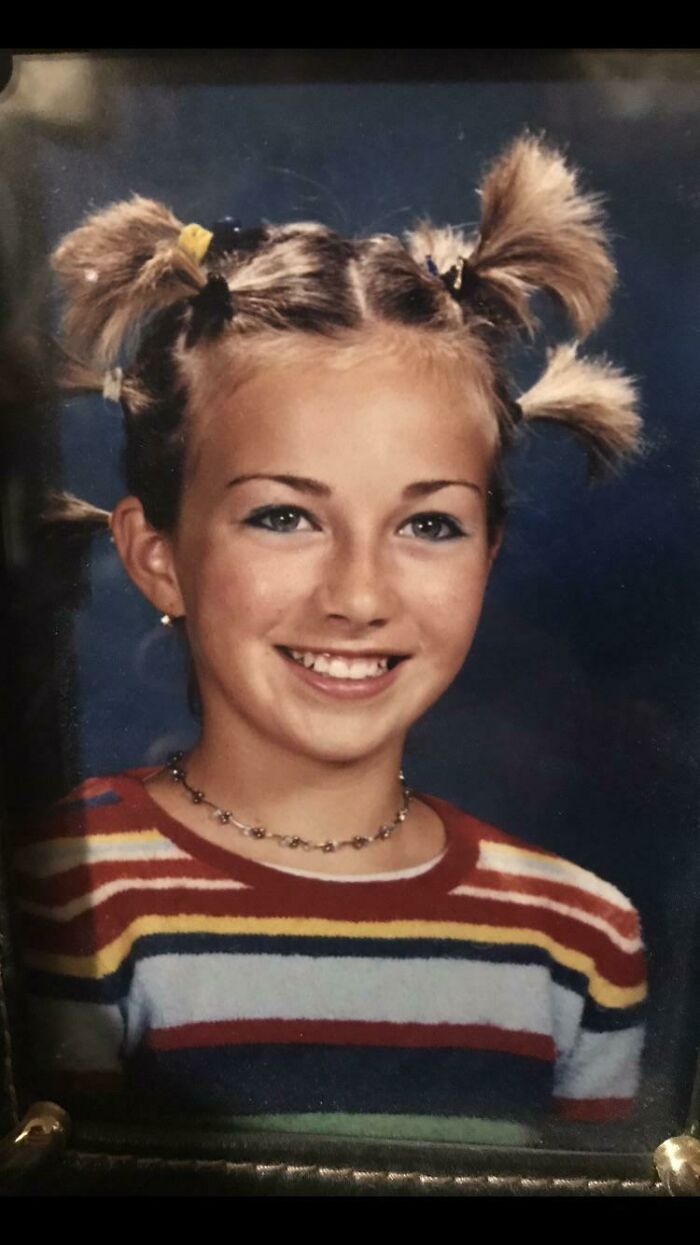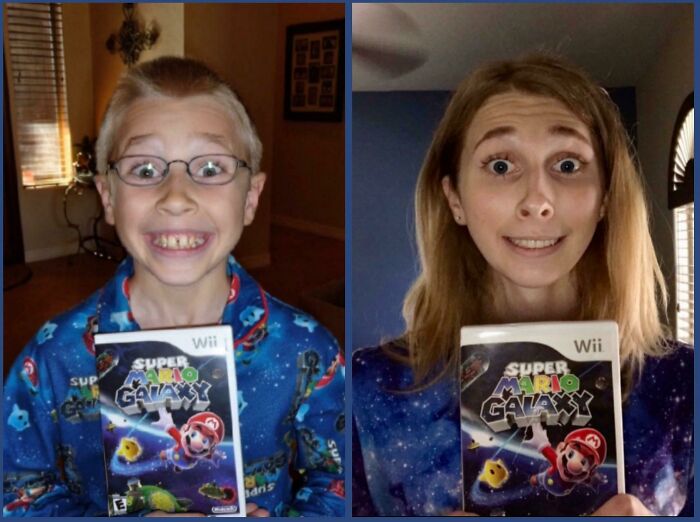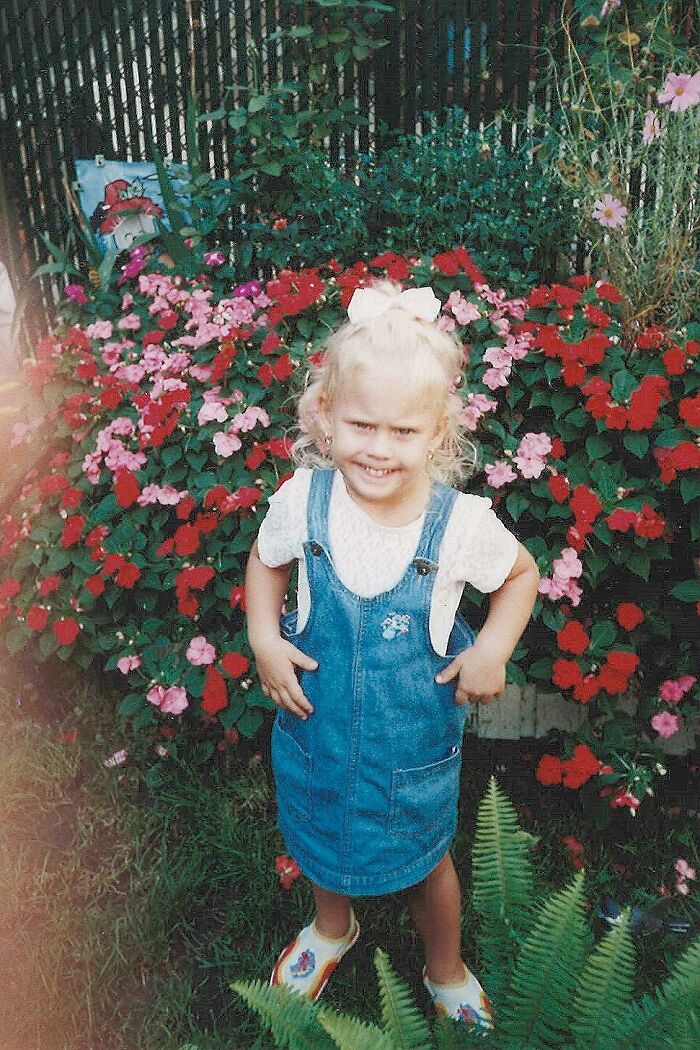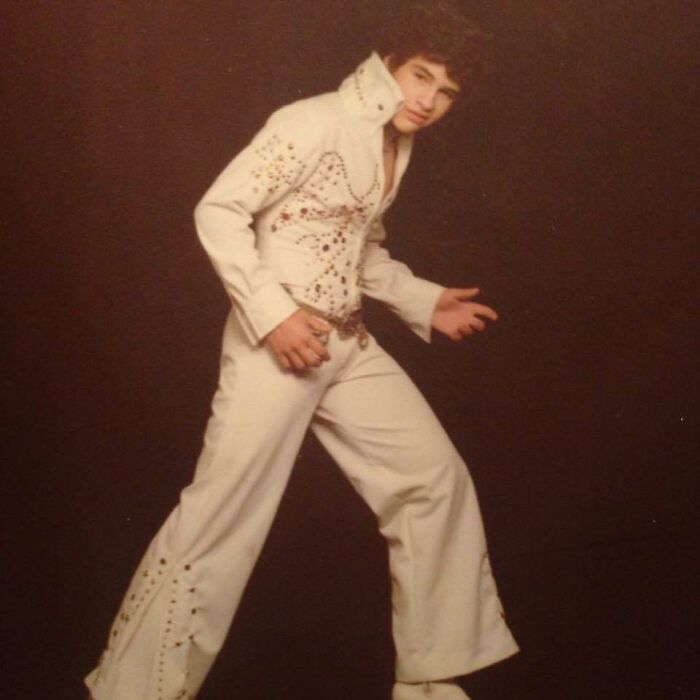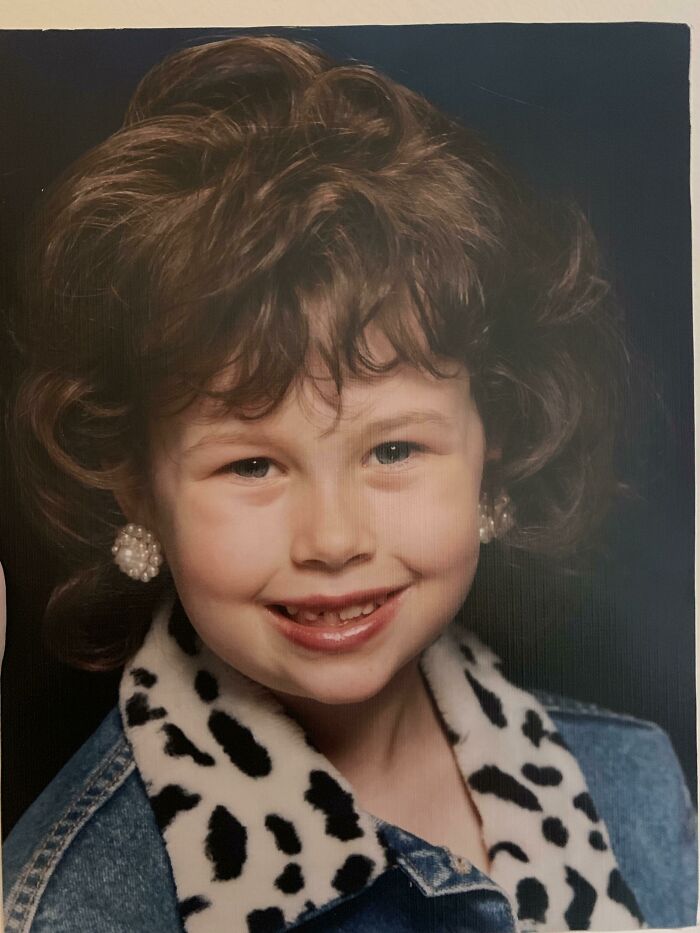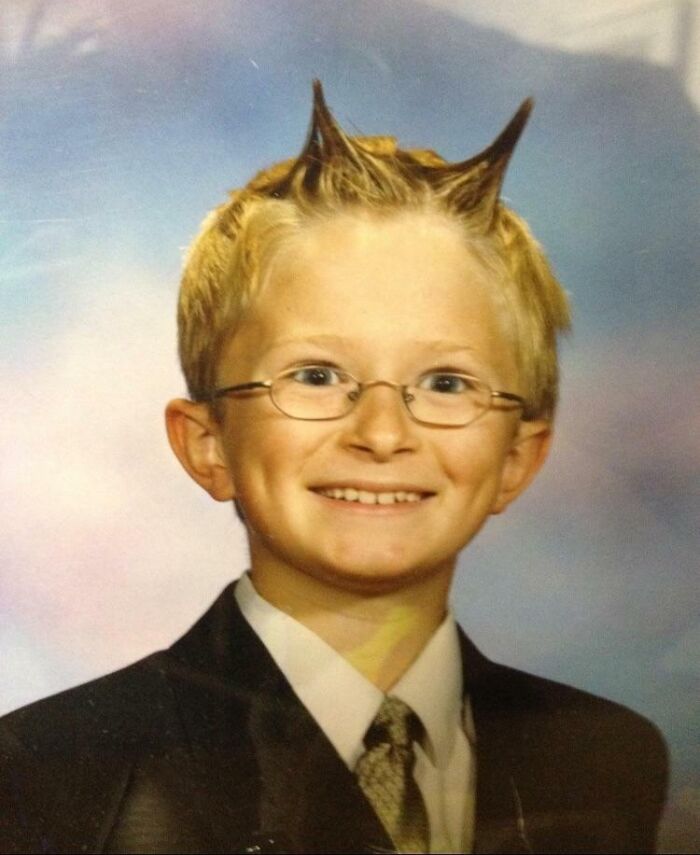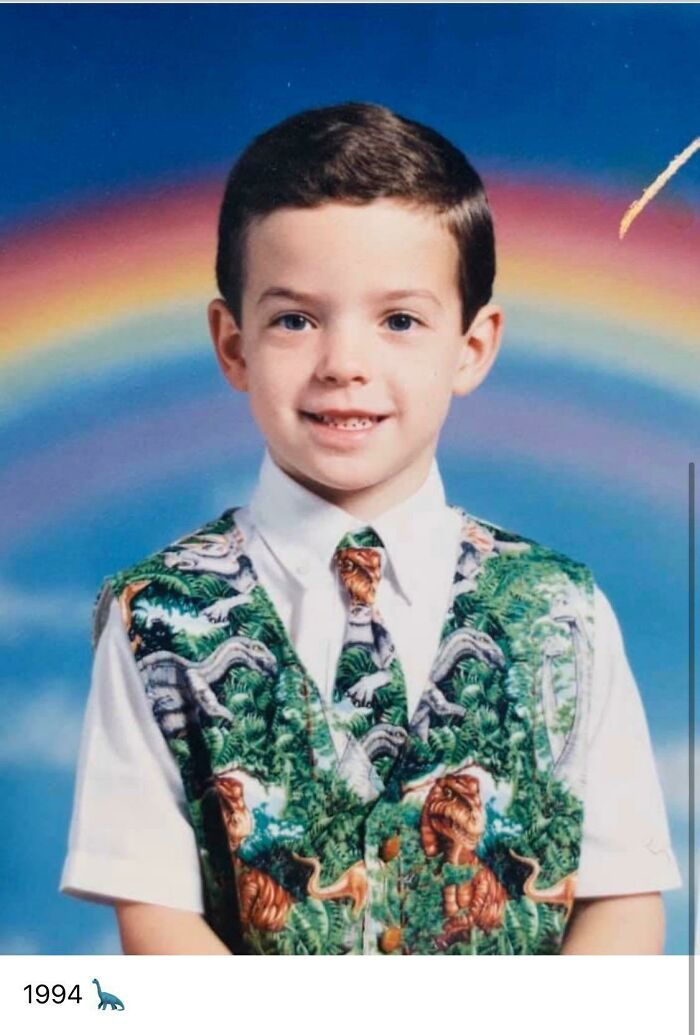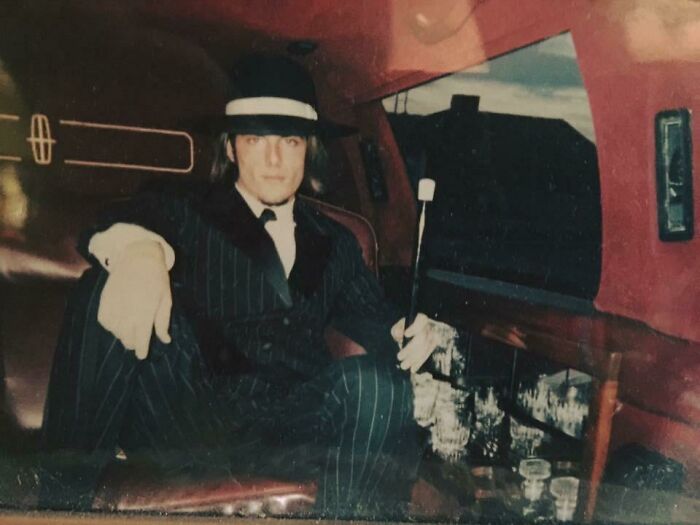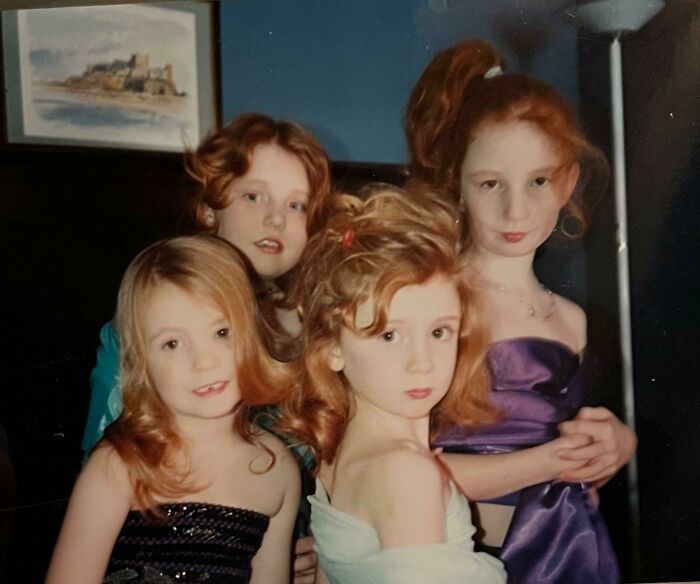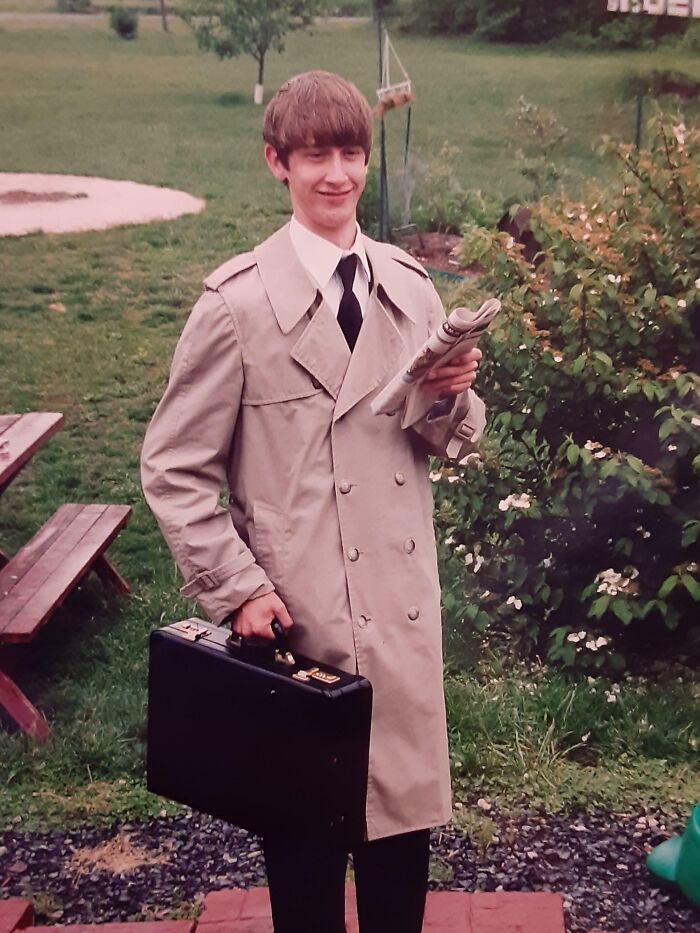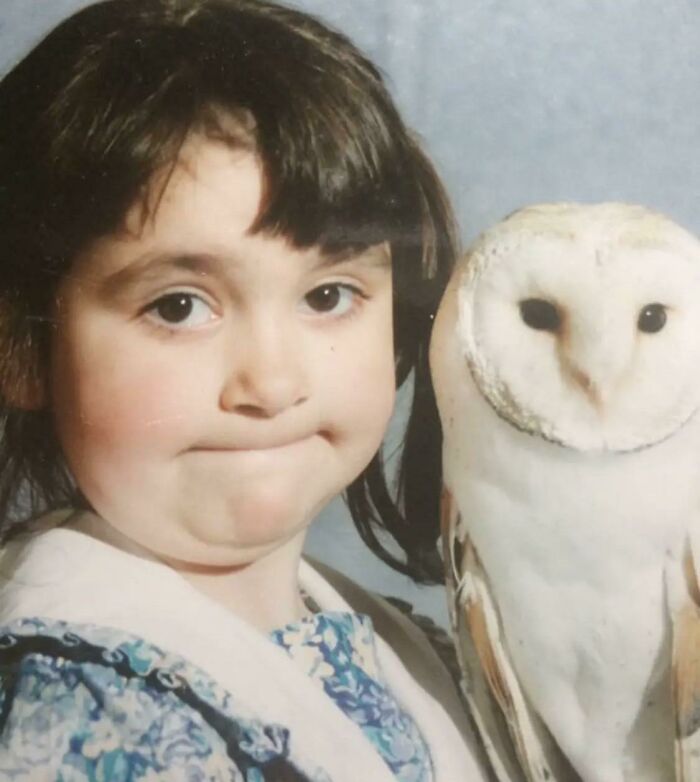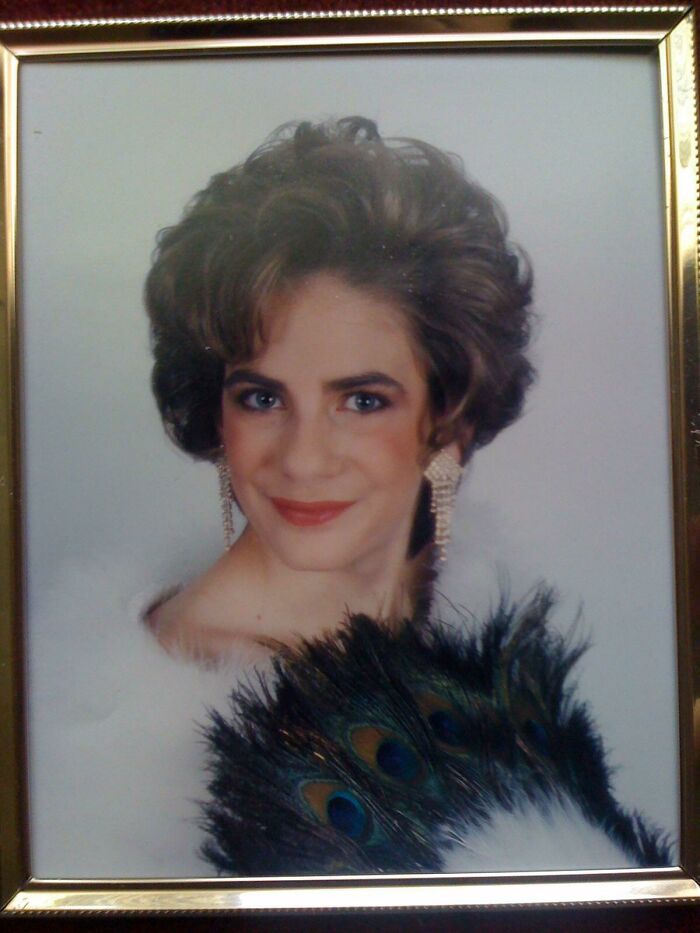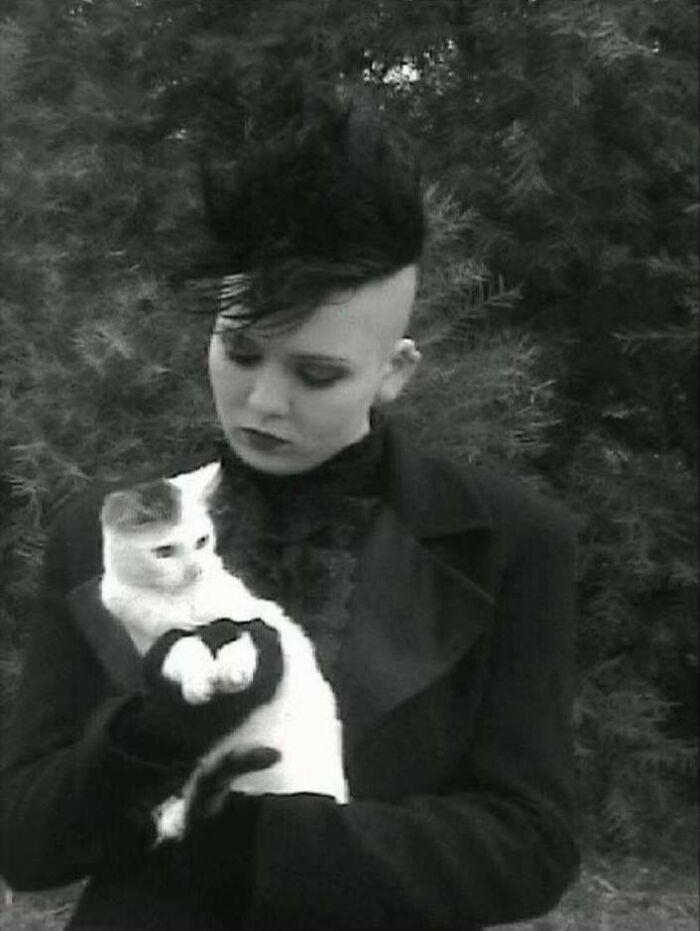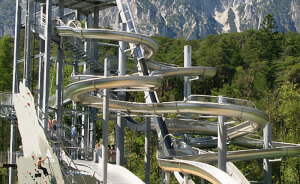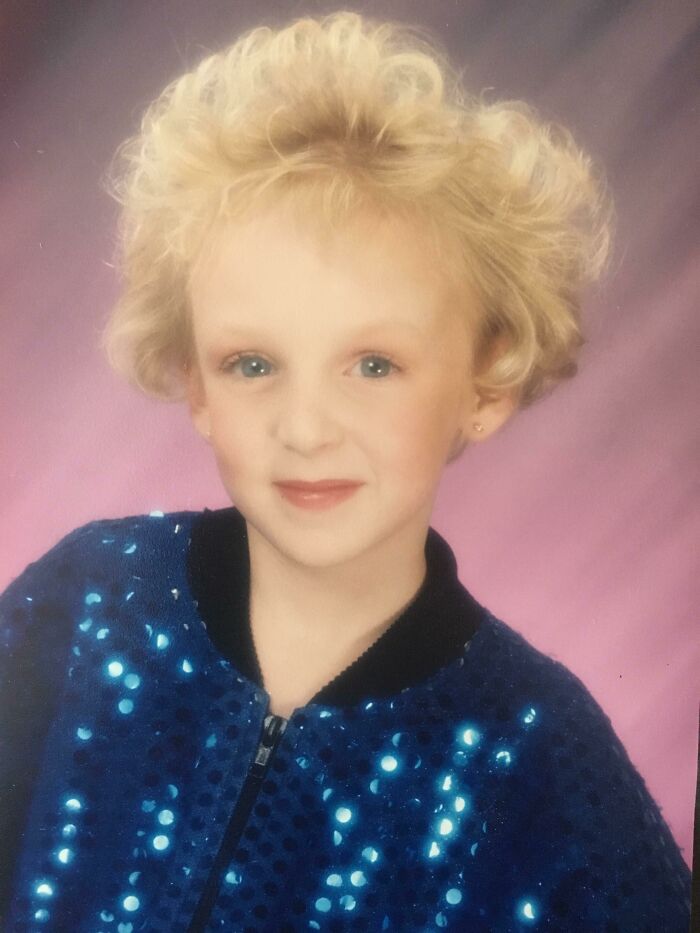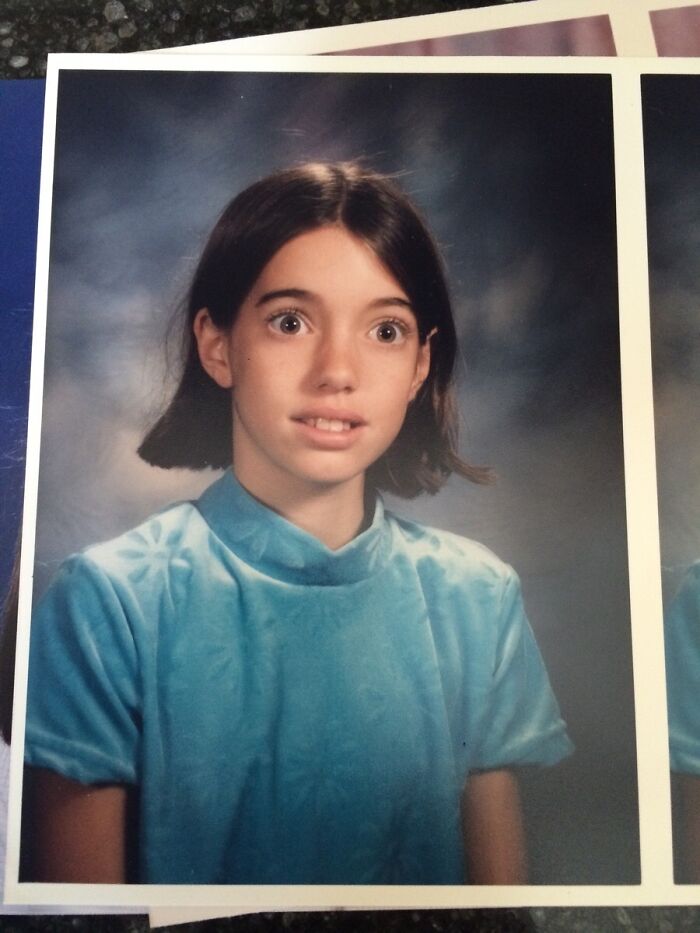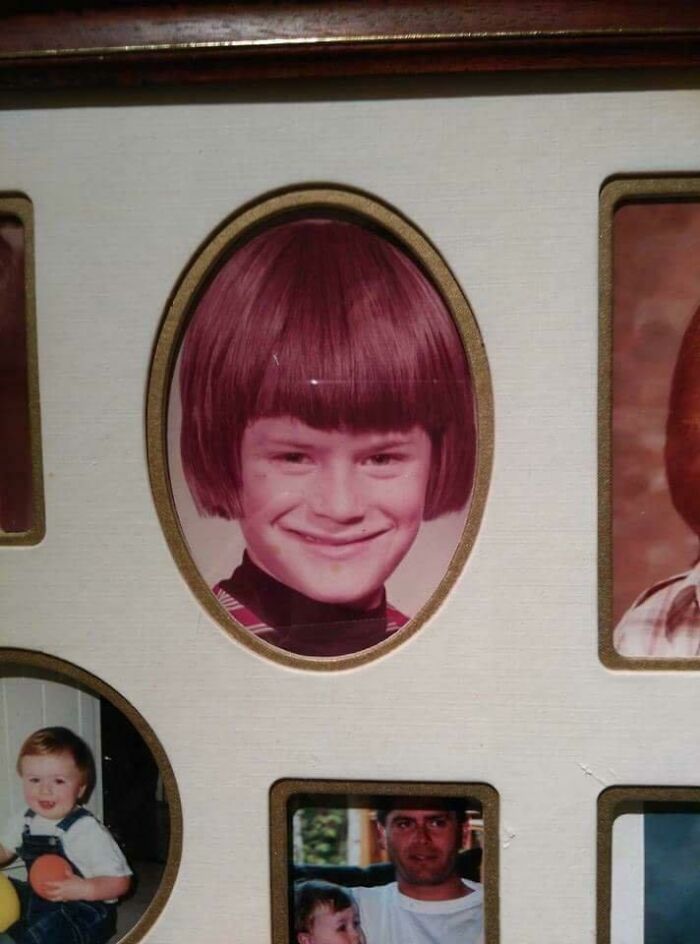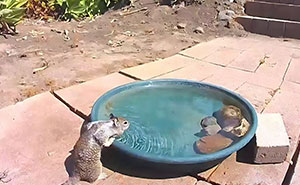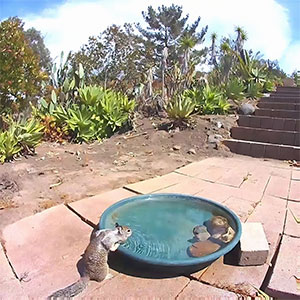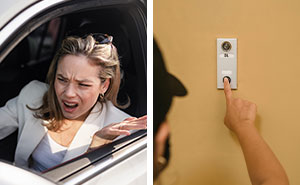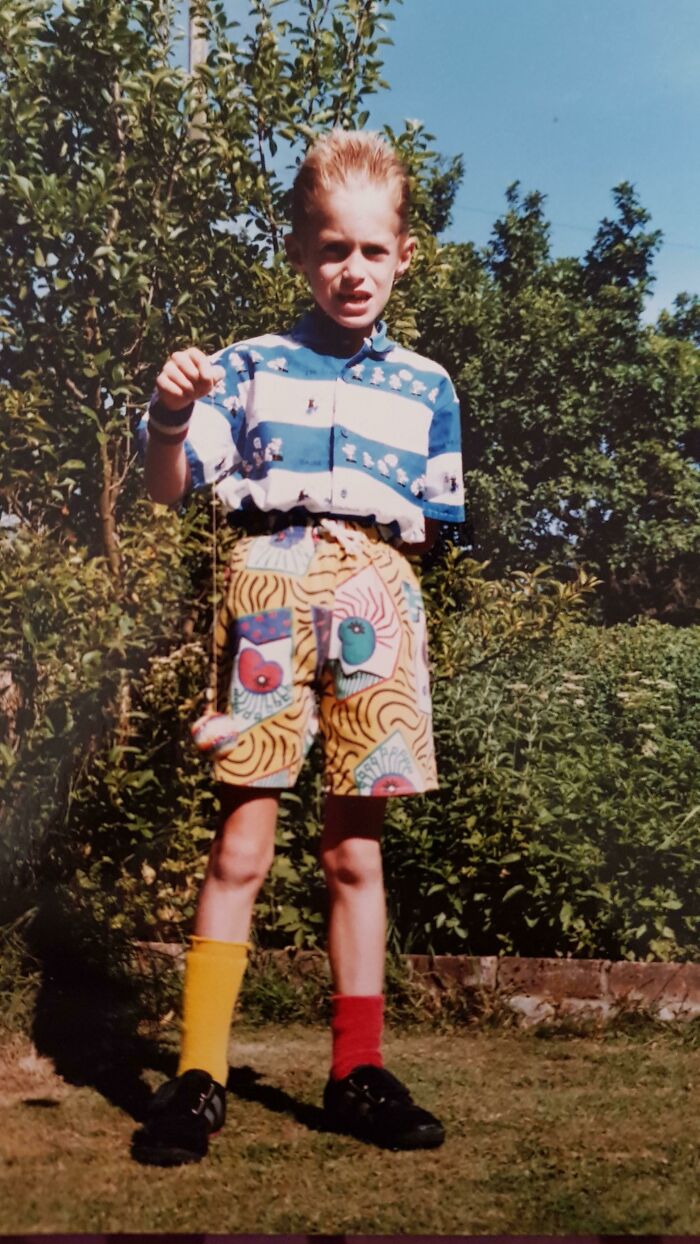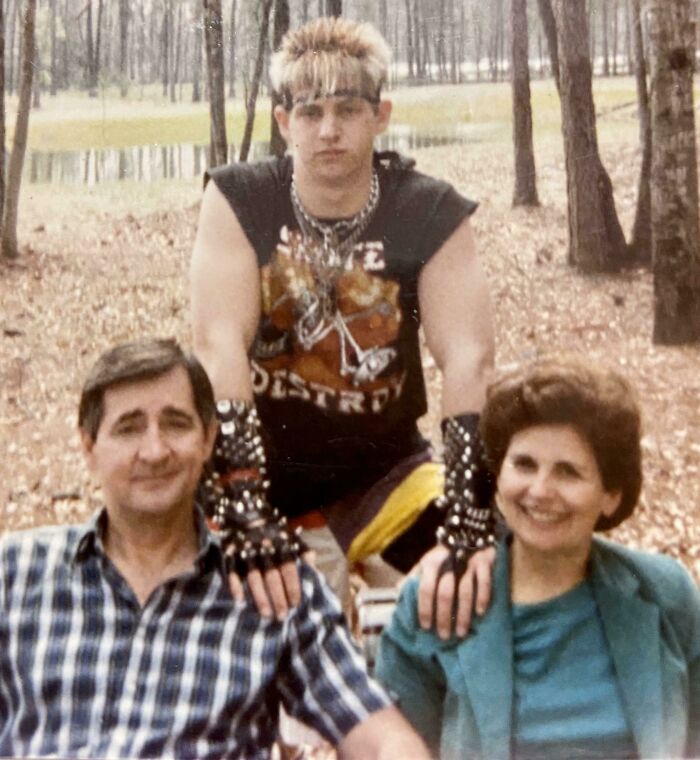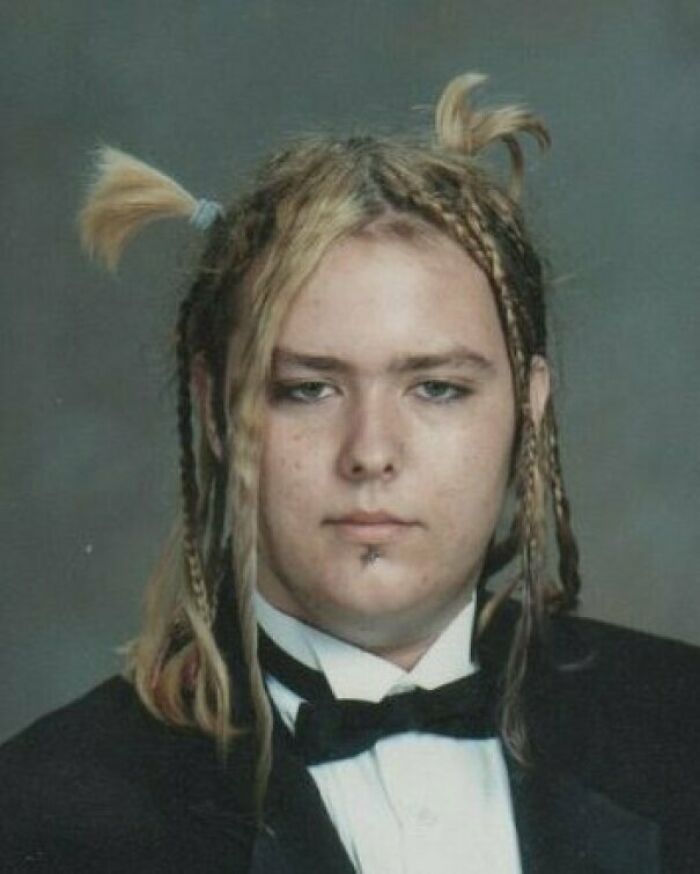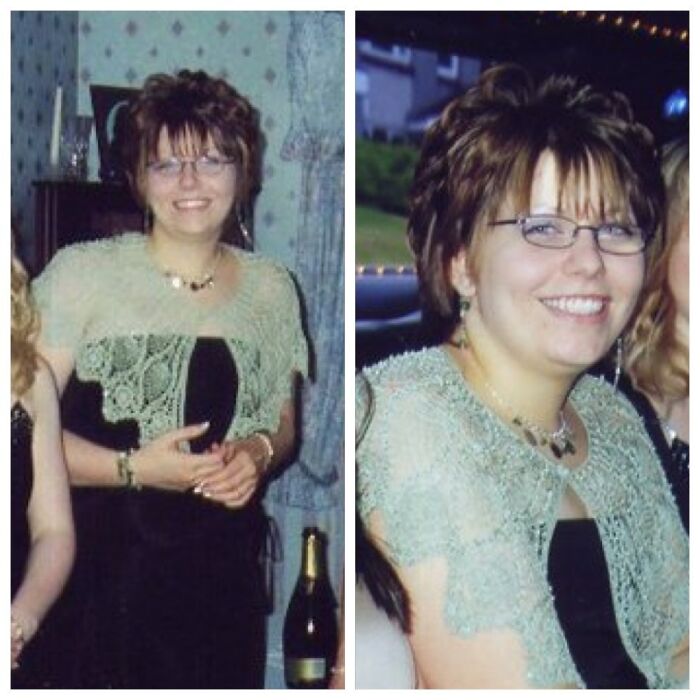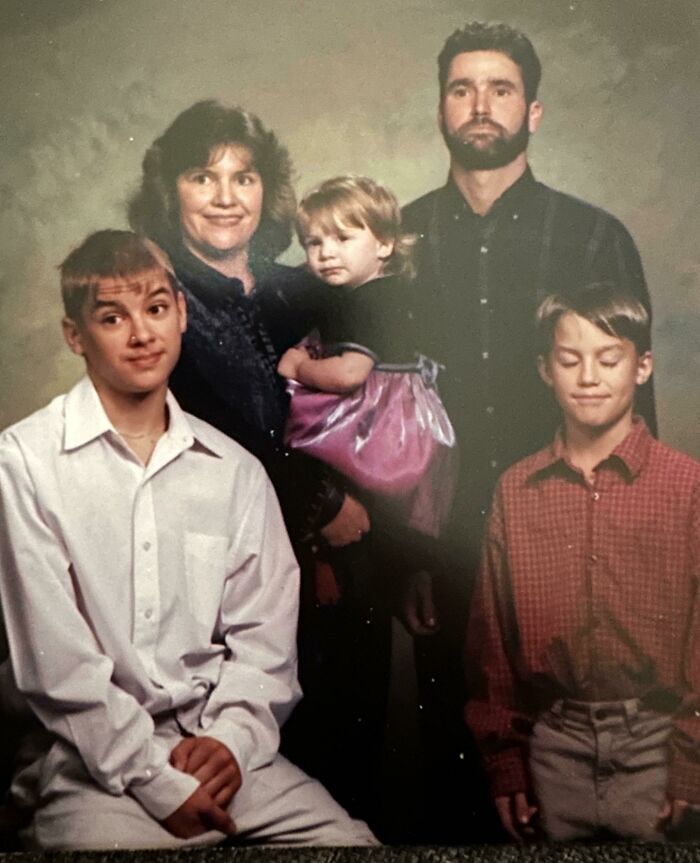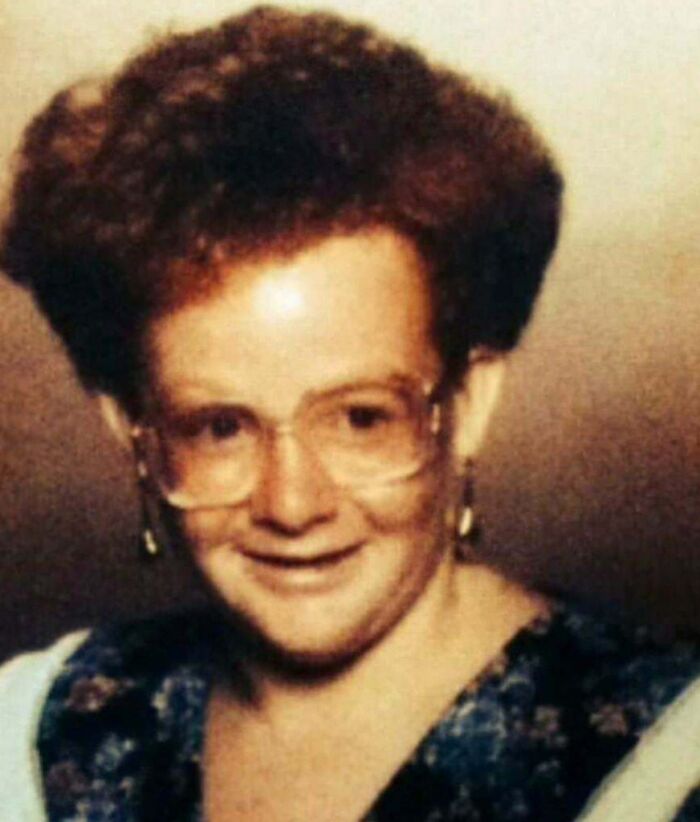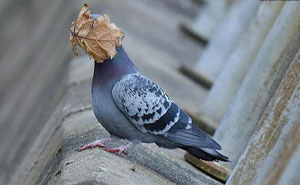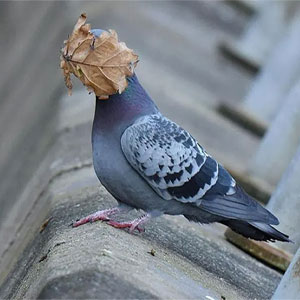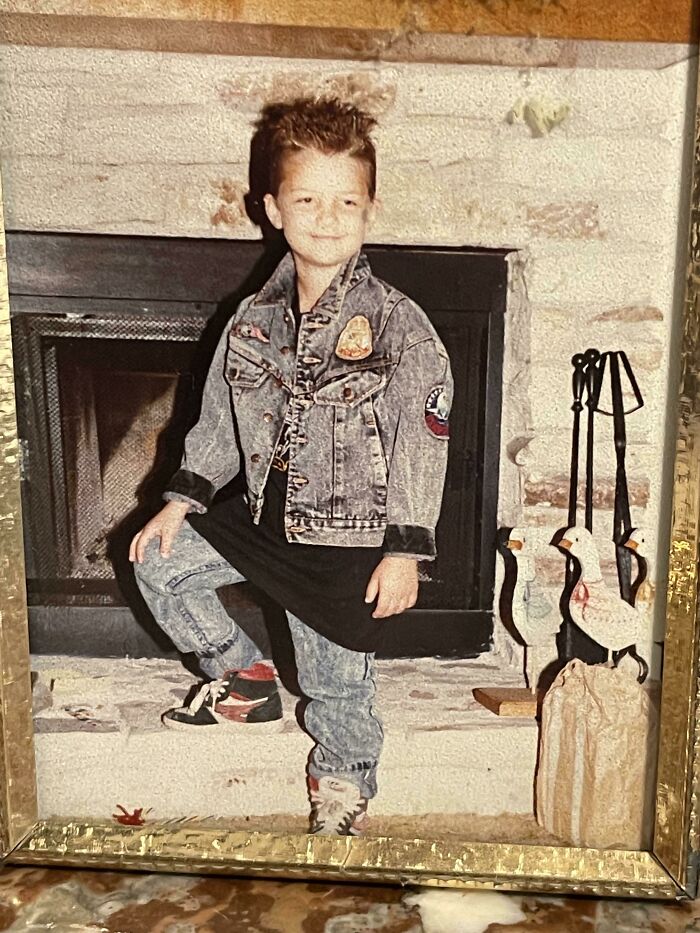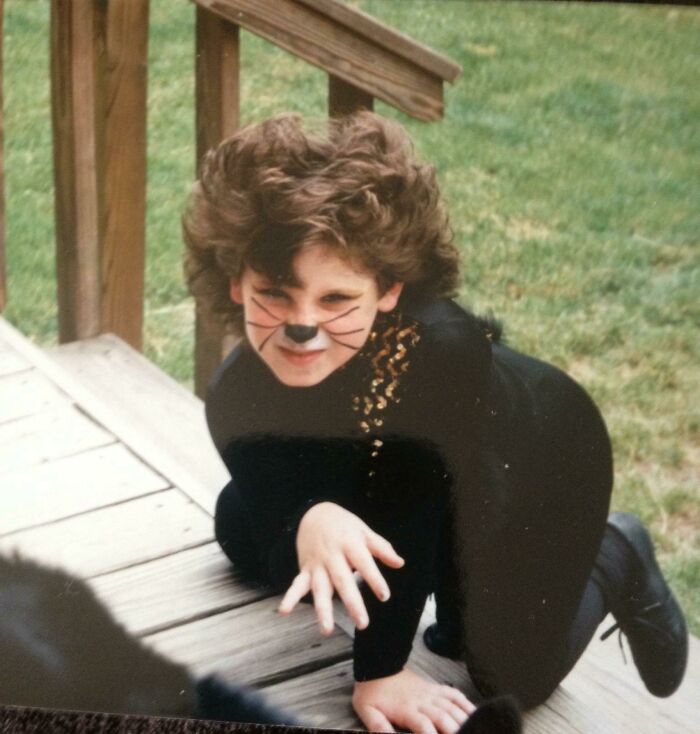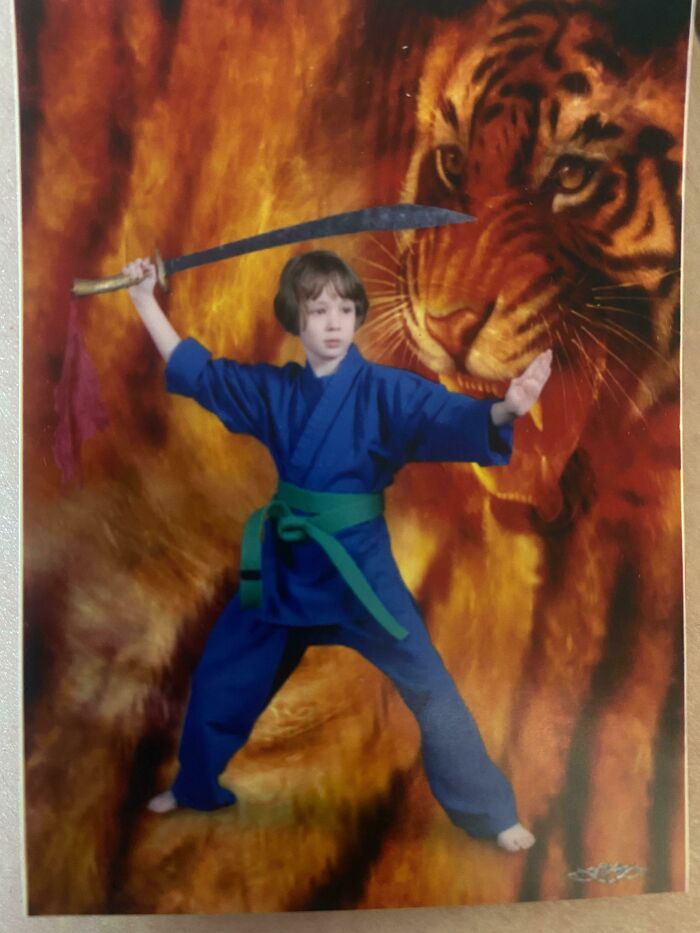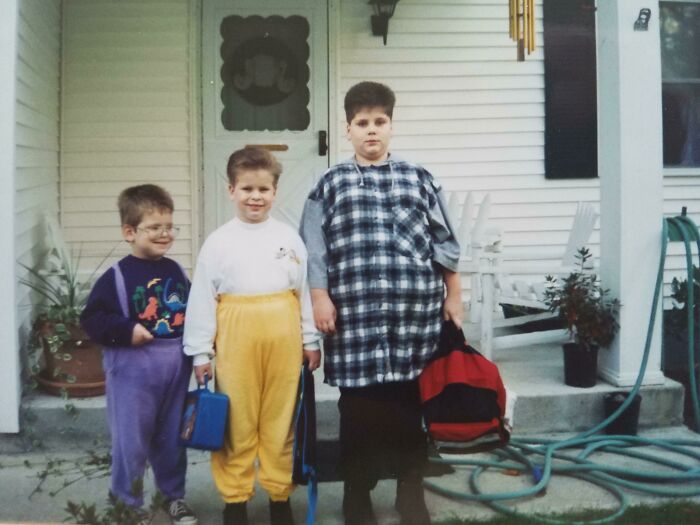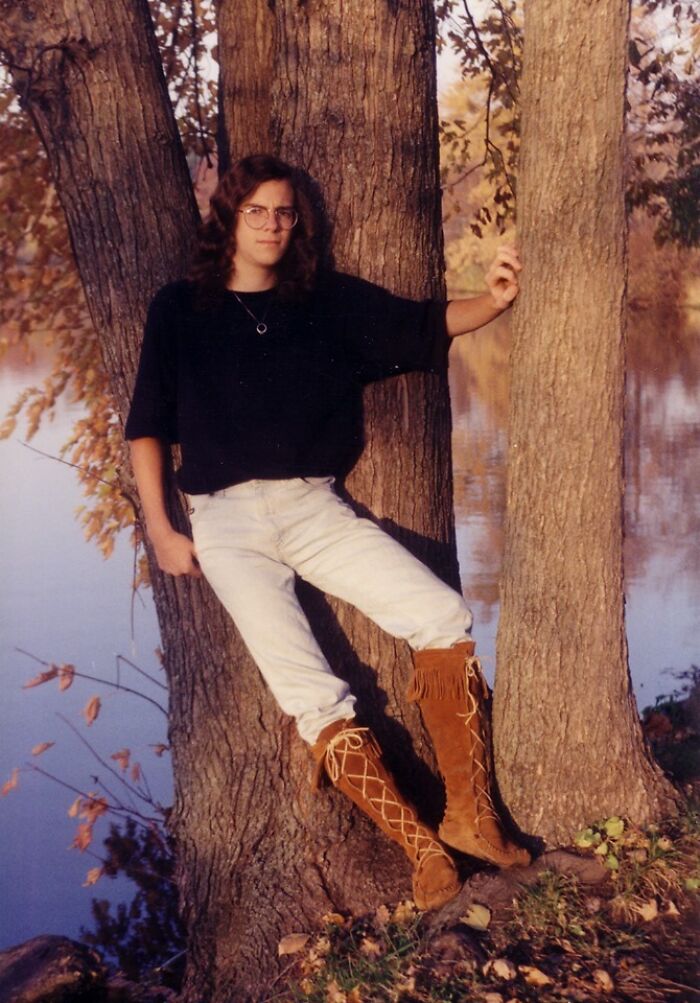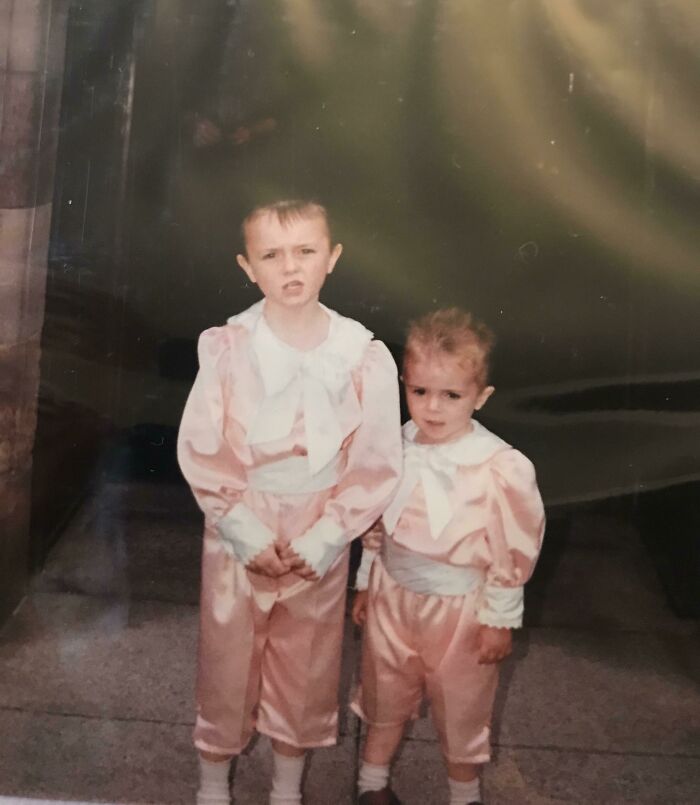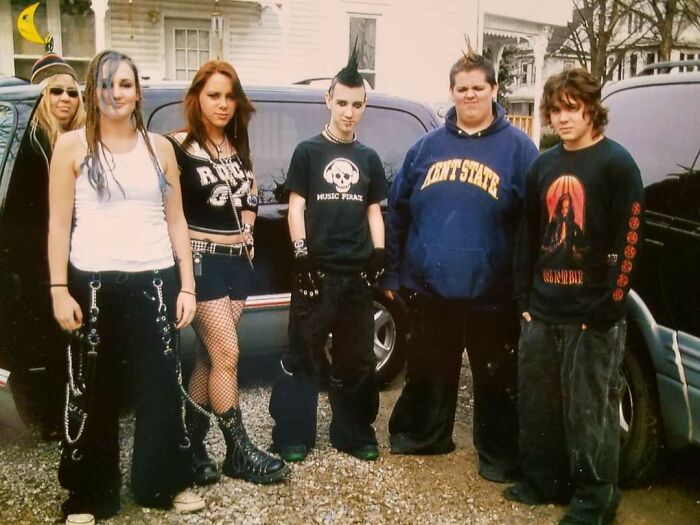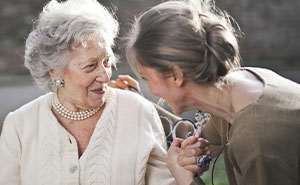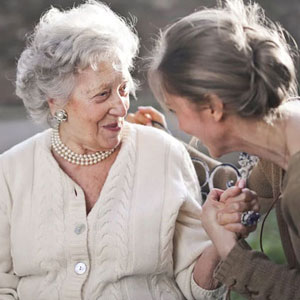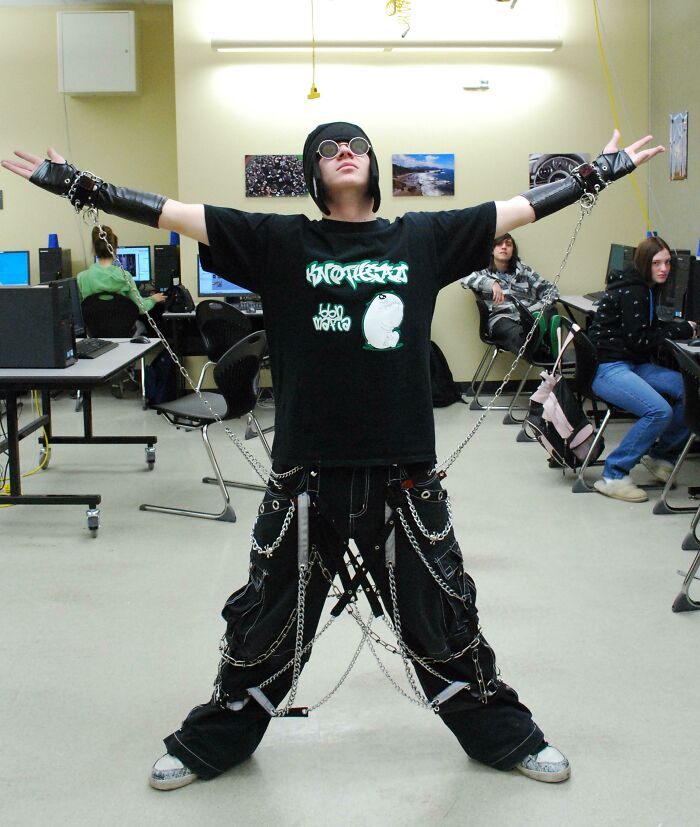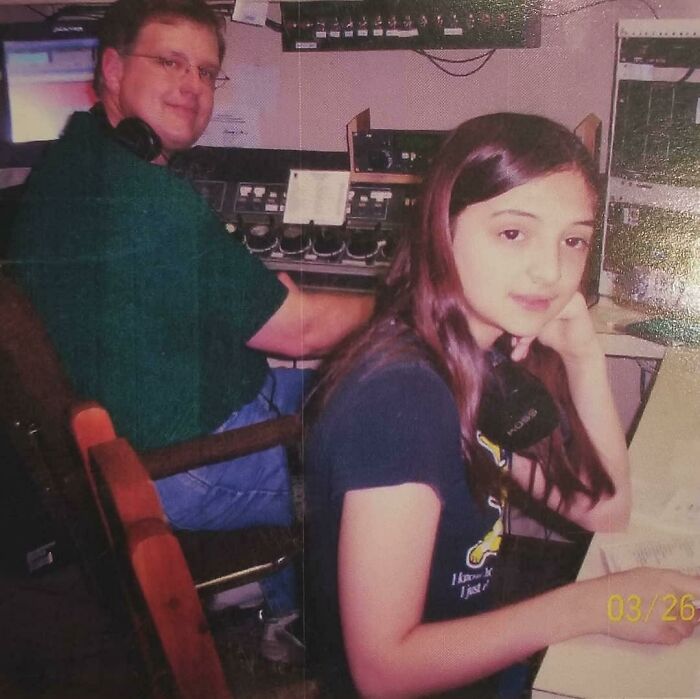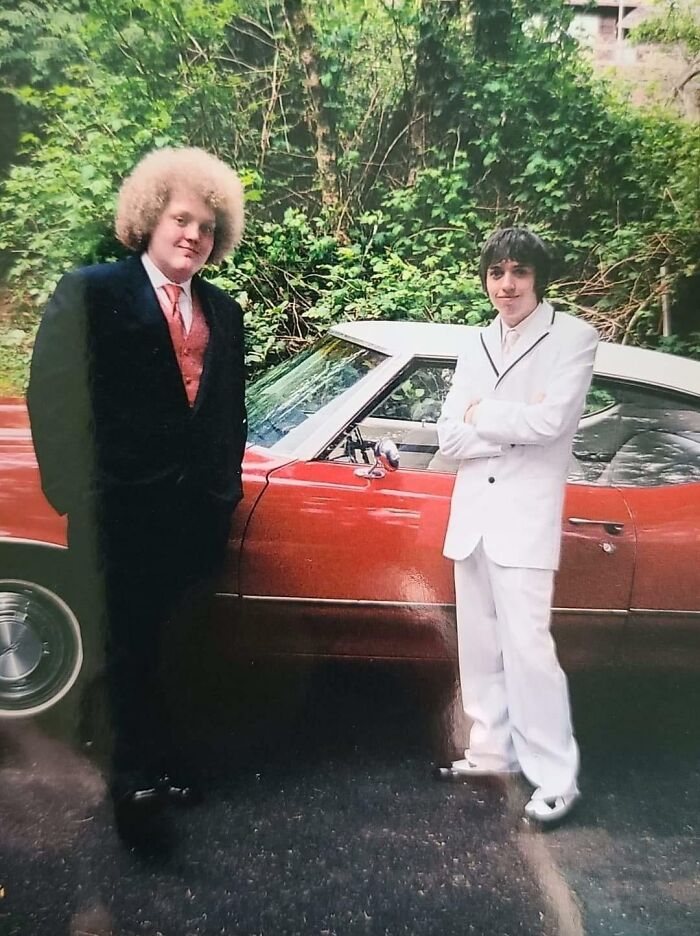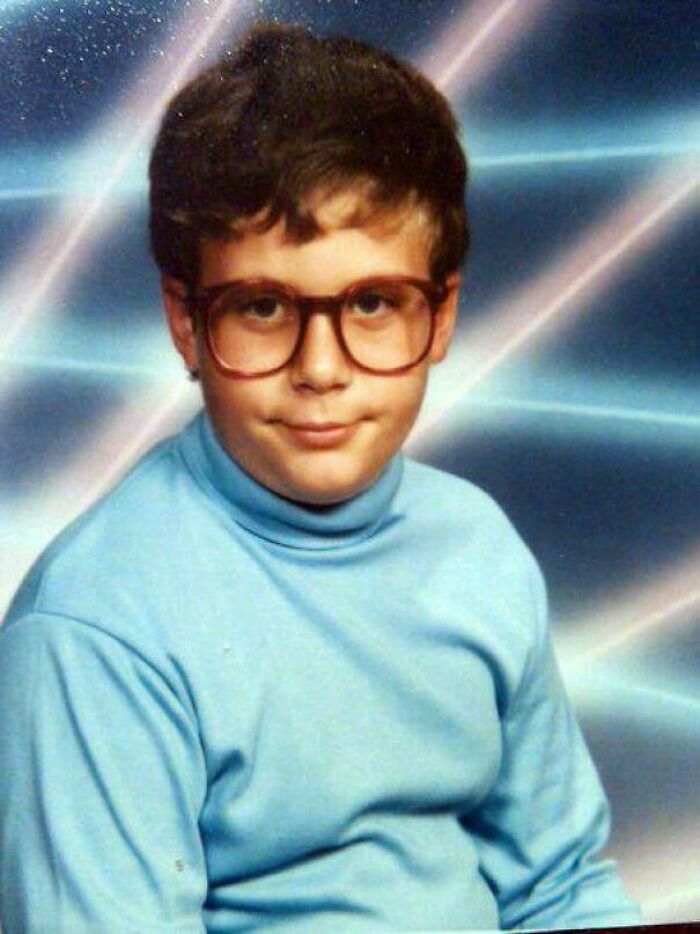But instead of pushing them to the back of our minds, the subreddit ‘Blunder Years’ encourages people to share their most embarrassing childhood photos with pride, turning old regrets into moments we can all enjoy together. At Bored Panda, we love celebrating these nostalgic missteps, so we’ve compiled the best ‘Blunder Years’ photos of all time from those we’ve featured before. Keep scrolling to see them all, and don’t miss our conversation with clinical psychologist Dr Charlotte Russell, who explains how awkward situations can shape our identities. The followers of the ‘Blunder Years’ subreddit—one of Reddit’s biggest communities with almost a million members—would probably agree with me. They’re all about owning their past selves. As the group puts it, the photos shared here need to be truly cringe-worthy. “Simply being nerdy just isn’t going to cut it. If you wore your ‘nerd glasses because you thought you were so hipster,’ that’s not enough of a blunder.” And the redditors deliver, offering everything from painfully bright 80s outfits to intense emo and goth phases, and all the questionable trends of the early 2000s. It really feels like going through an archive. Often, our tendency to cringe at ourselves stems from our sensitivity to how others perceive us. “Humans are a social species, and our social relationships matter to us,” Russell says. “This can mean we fear or worry about things that other people might judge us for—whether it’s over a bad haircut or following a trend we later find regrettable.” “There are actually hardiness and resilience genes that can be turned on and off with that,” says Joyce Mikal-Flynn, who teaches a course on neuroscience and post-traumatic growth at Sacramento State University. Adolescence, she explains, is the perfect time for those genes to kick into action. “It has to start early and often.” Individuals with a certain variant of this gene are 75 percent more likely to struggle with issues like substance abuse, aggression, and antisocial personality disorder if they don’t seek help after a traumatic event. However, unlike severe childhood trauma, those awkward teenage phases provide a more manageable way for kids to build their resilience over time, according to Mikal-Flynn. Adults reason with a fully developed frontal lobe, which controls many abilities, including thinking, movement, and memory. It also plays a key role in social skills, helping us understand how to communicate, behave, and interact with others. Since the frontal lobe finishes developing in our twenties, adolescent brains are still in the process. When teens recall socially traumatic experiences, they engage these regions of the brain, which helps bridge the gap between the impulsive mind of a child and the rational thinking of an adult. While trauma from bullying about appearance can have negative psychological effects, with the right support from parents and friends, these challenges can become less of a burden and more of a stepping stone toward maturity. “Parents don’t want their children to be in pain and I understand that, but there’s another way to deal with that between letting them hurt all the time and not letting them feel it at all,” adds Mikal-Flynn. “There’s a middle ground.” These moments can also reveal the quality of your friendships. “If you share something with someone and they laugh at you rather than with you, it might be a sign to re-evaluate that friendship,” Russell notes. Follow Bored Panda on Google News! Follow us on Flipboard.com/@boredpanda! Please use high-res photos without watermarks Ooops! Your image is too large, maximum file size is 8 MB.



